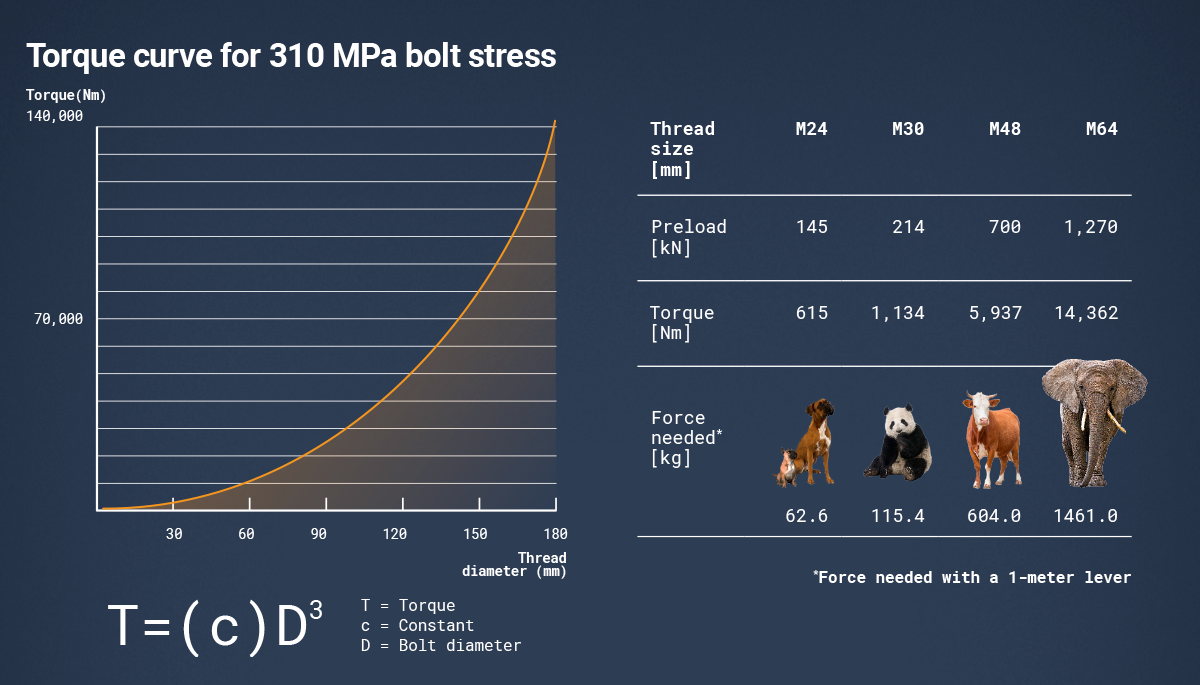
How Much Force is Required to Tighten a Bolt?
Did you know that there's a connection between animals and big bolts?
That’s right! It's possible to compare an animal's weight with the force it takes to achieve a specific torque. Clever, isn’t it? The weight of a cow, for instance, is the force it takes for a torque of 5,937 Nms using a 1-meter lever!
Torque force grows exponentially as you work with larger bolts, but it’s not always easy to understand just how much power is needed to achieve said torque force, so the animal’s weight gives us a useful comparison. By comparing against an elephant, it becomes clear that if you’re working on really large bolted connections then you need to work extremely hard to generate the required torquing force.
 Luckily, there is an easier way to tighten large bolted connections than using the force of an animal — and that’s by using tension instead of torquing. Depending on your application, Nord-Lock Group has two distinct and innovative solutions:
Luckily, there is an easier way to tighten large bolted connections than using the force of an animal — and that’s by using tension instead of torquing. Depending on your application, Nord-Lock Group has two distinct and innovative solutions:
The first: Boltight hydraulic tensioners
Boltight has been at the forefront of hydraulic bolt tensioning for over a decade. Our tensioning tools provide fast, accurate and safe solutions to tighten and loosen multiple bolts safely and simultaneously, with less effort. Using high-pressure hydraulics, bolt tensioners stretch the bolt before the nut is wound down under no preload, ensuring extreme accuracy, speed and uniformity.
The second: Superbolt multi-jackbolt tensioners
Superbolt was the world’s first to revolutionize nuts and bolts with multi-jackbolt tensioning (MJT) technology. The technology has been proven in tens of thousands of successful installations and continues to develop a multitude of solutions to solve the next generation of bolting challenges. Superbolt MJTs take the high preload requirements in large diameter bolting and break it down into manageable torques using the jackbolts threaded through the nut body.